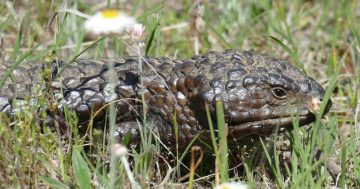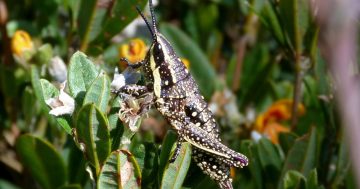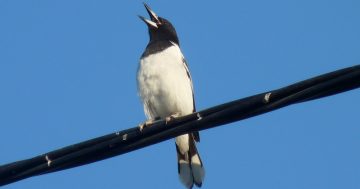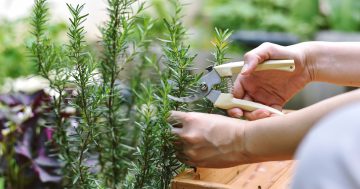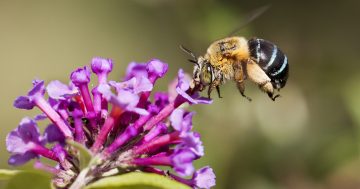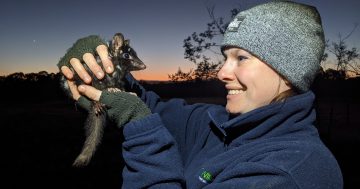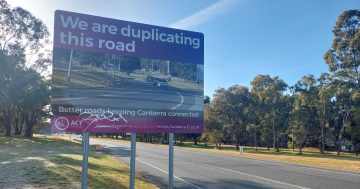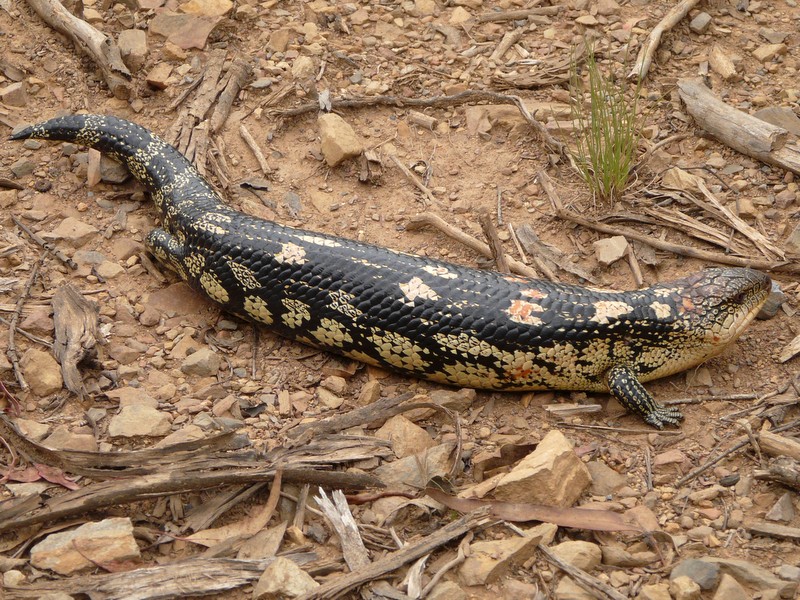
This lovely blotched blue-tongue lizard was by the road in the snow gums in Namadgi National Park. Photo: Ian Fraser.
Every year The Guardian runs a readers’ poll for bird of the year, which is effectively a vote for Australia’s favourite bird – a significant poll indeed. Sadly no-one has yet taken on the daunting task of organising Australia to vote for its favourite reptile, although I live in hope.
If it were to happen, I’m confident the laidback eastern blue-tongue lizard would put in a very strong showing, at least in eastern Australia.
I reckon it would be a shoo-in here in the bush capital.
Blue-tongues, or ‘blueys’, are big enough to be obvious, are easygoing, and not at all averse to letting humans share their yards, although they like us to keep our cats and dogs away from them.
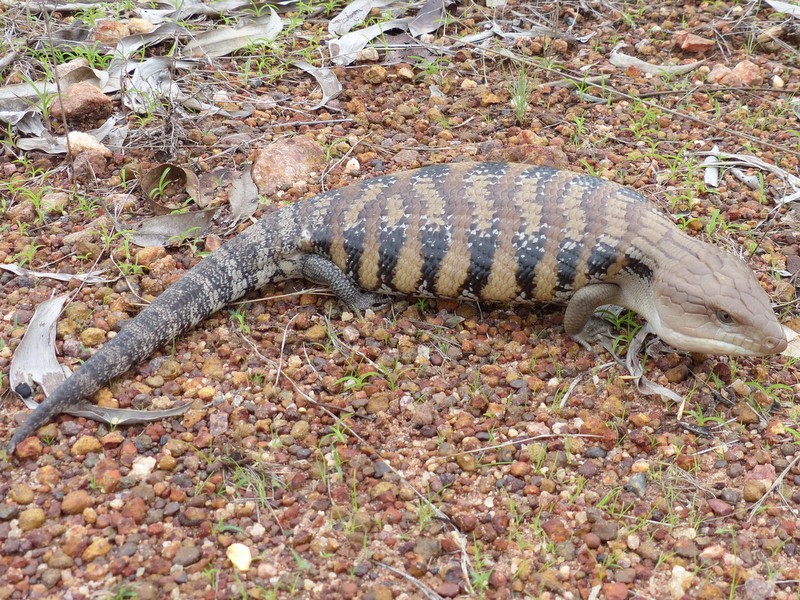
This eastern blue-tongue has turned itself side-on and puffed itself up to look bigger and scarier. Photo: Ian Fraser.
They are actually skinks, most of which are very small and dart across the ground and over fallen logs. Blueys are close to being the largest of that huge cosmopolitan family, and a big one can be more than 50cm long and 30 years old. Unsurprisingly, they are pretty leisurely in their movements.
Many Canberra backyards host a bluey, which generally live quietly under rocks or the house slab or behind the bins, coming out to play a big part in keeping the snail and slug population under control.
They don’t mind the odd strawberry, either, but that can be managed with some judicious fencing. On the other hand, I know gardeners who leave the odd strawberry or grape outside the bluey’s residence, offerings which are gratefully accepted. A shallow dish of water is a valuable contribution to their wellbeing, too.
Many cold country small skinks – such as those which live in the mountains – give birth to live young. The eggs hatch internally to avoid them having to be buried in frozen ground.
All seven blue-tongue species also give birth to live young, even those that live in the tropics of northern Australia. The unborn young are nourished by a mammal-like placenta connecting them internally to their mother, a most unusual scenario among reptiles.
In Canberra, the mother gives birth to a dozen or more babies in summer so currently there will be lots of small blue-tongues making their way in a dangerous world.
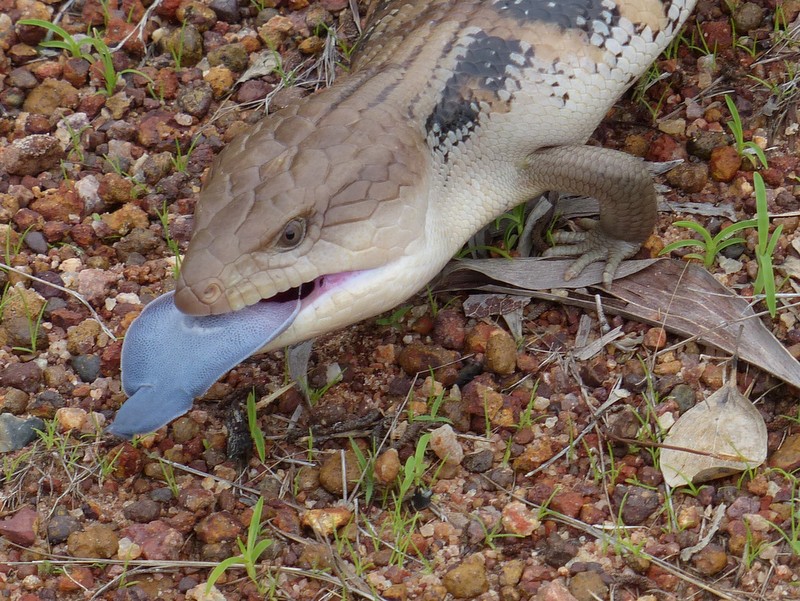
The blue tongue is truly blue and is intended to frighten us. Photo: Ian Fraser.
The wonderfully blue fleshy tongue is part of their defence mechanism, which is nearly all bluff. When threatened, blue-tongue lizards will hiss and flatten their body to look bigger, and poke that surprising blue tongue out towards their tormentor.
Their wedge-shaped head is mostly due to powerful jaw muscles which enable them to efficiently crush hard snail shells and beetle carapaces. The head also gives a slightly snake-like impression, which can add to the scary display. More than one human resident in Canberra has had a nasty fright due to this resemblance, before reality reasserts itself.
Blue-tongues don’t need sharp teeth to munch snails or strawberries so they are small and blunt. The only way to get bitten by one is to put your finger in their mouth, which I hope is evidently a bad idea. Should you do so, bluey will probably not break the skin, but can leave a notable bruise.
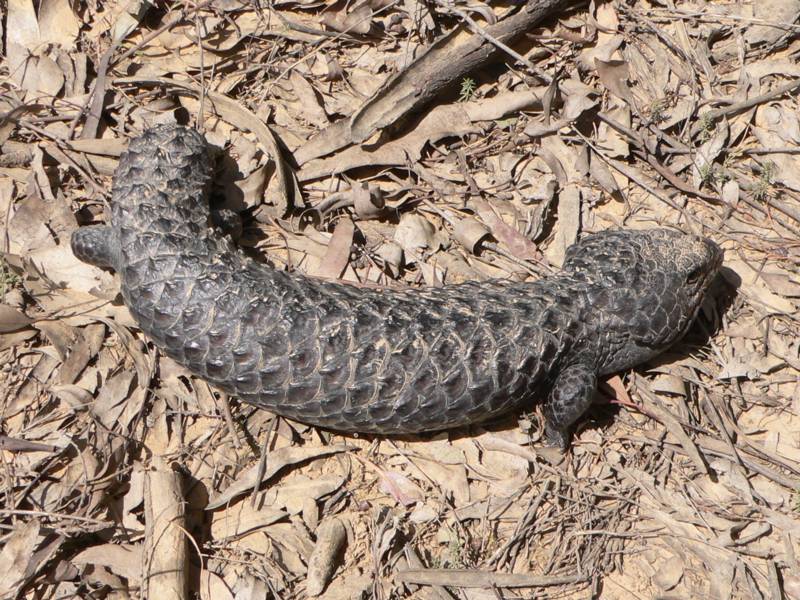
A shingleback, which is black to absorb maximum warmth from the sun, at Mulligans Flat. Photo: Ian Fraser.
Two other blue-tongue species also live in the ACT. At higher elevations, such as in the mountains and around Wamboin, the eastern blue-tongue is replaced by the truly beautiful blotched blue-tongue with marbled sides and pink-orange blotches on a dark back. Watch for them crossing the road in the Brindabellas when you’re out for a drive in the snow gums.
The other blue-tongue lizard is often not recognised as one, although it’s familiar enough. The shingleback – also known as a bobtail, stumpy tail, bog-eye or sleepy lizard, the latter is what I called them when growing up – is essentially a lizard of the hot inland. It just comes into the northern warmer end of the ACT. Mulligans Flat and Mount Majura are good places to see them.
The shingleback is like a pine cone with a head, legs and stubby tail. To make the most of the sun, which is relatively weak here most of the time, ACT shinglebacks are jet black. Unusually among reptiles, they mate for life and seek out their mates each spring after coming out of winter torpor. Unlike other blue-tongues, shinglebacks give birth to only two young each year.
But it’s the familiar eastern bluey you’ll be seeing for another month or so around Canberra, and even in your yard if you’re lucky. Enjoy them, and maybe leave a treat out for them.
Ian Fraser is a Canberra naturalist, conservationist and author. He has written on all aspects of natural history, advised the ACT government on biodiversity, and published multiple guides to the region’s flora and fauna.
Original Article published by Ian Fraser on The RiotACT.



